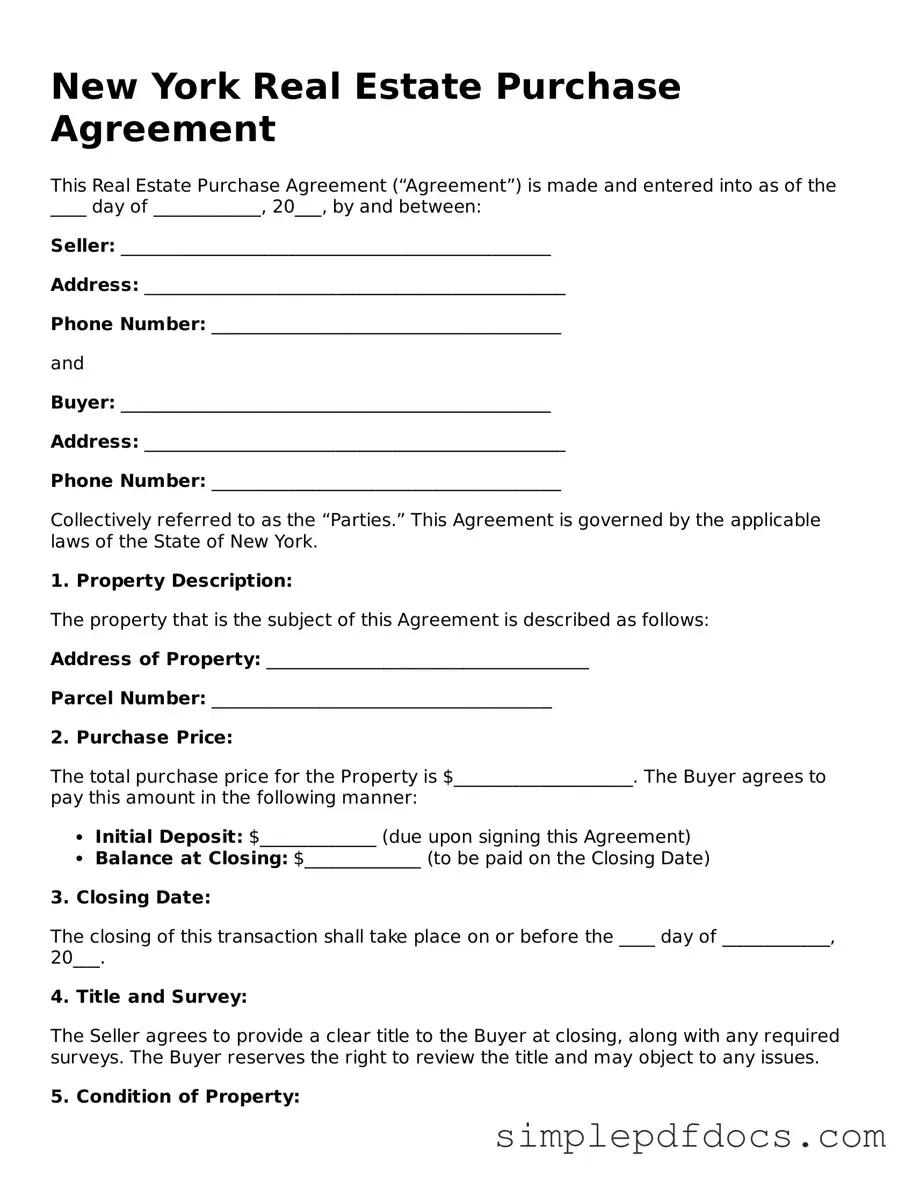The New York Real Estate Purchase Agreement is a crucial document in the home buying process, serving as the foundation for the transaction between buyers and sellers. This form outlines the essential terms of the sale, including the purchase price, the property description, and the closing date. It also delineates the responsibilities of each party, such as the buyer's obligation to conduct inspections and the seller's duty to provide clear title. Additionally, the agreement addresses contingencies, which are conditions that must be met for the sale to proceed, such as securing financing or satisfactory appraisal results. The form includes provisions for earnest money deposits, which demonstrate the buyer's commitment to the purchase, and it stipulates what happens if either party fails to fulfill their obligations. By clearly laying out these details, the New York Real Estate Purchase Agreement helps to protect the interests of both buyers and sellers, ensuring a smoother transaction and minimizing the potential for disputes. Understanding this document is essential for anyone involved in real estate transactions in New York, as it not only sets the stage for the sale but also reflects the legal rights and responsibilities of the parties involved.
